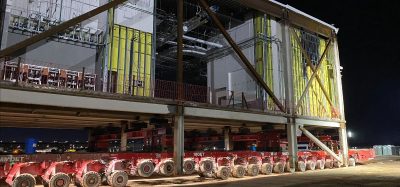Airfield lighting: A regulatory approach
- Like
- Digg
- Del
- Tumblr
- VKontakte
- Buffer
- Love This
- Odnoklassniki
- Meneame
- Blogger
- Amazon
- Yahoo Mail
- Gmail
- AOL
- Newsvine
- HackerNews
- Evernote
- MySpace
- Mail.ru
- Viadeo
- Line
- Comments
- Yummly
- SMS
- Viber
- Telegram
- Subscribe
- Skype
- Facebook Messenger
- Kakao
- LiveJournal
- Yammer
- Edgar
- Fintel
- Mix
- Instapaper
- Copy Link
Posted: 26 January 2016 | Gernot Kessler, Deputy Head of the ATM/ANS and Aerodrome Department at the European Aviation Safety Agency (EASA) | No comments yet
Today’s regulatory environment for systems such as airfield lighting is incomplete and varies widely across European Member States. In result, disadvantages emerge both for the manufacturing industry, as well as for the airfield operators. These lead in particular to market restrictions, additional burden and also clarity and liability issues. A carefully measured, wellbalanced future approach, in harmonising requirements at European level, could offer major profits to industry and facilitate the airfield lighting system market within, and also beyond, Europe. Gernot Kessler, Deputy Head of the ATM/ANS and Aerodrome Department at the European Aviation Safety Agency (EASA), explains further…


Not only at night and in detrimental visibility conditions, airfield lighting is seen among the top ranking factors for providing operational continuity at highest levels of safety. Accordingly, the significance of airfield lighting systems is reflected by many incident and accident analyses, and frequently subject to deliberations focusing on technological, as well as regulatory improvements.
At the same time, the overall process leading from production to the integration of any lighting products at the individual airfield, today is confronted by a variety of specific challenges, arising from diverging local requirements and different regulatory frameworks at European Member States’ level. Limitation to market access, possible distortion of competition before all for small and medium enterprises, and excessive burden for production stakeholders as well as for airfield operators can be found among the arguments inviting us to consider an improved regulatory environment in this field.
Moreover, resulting disproportionate efforts for local overseeing authorities and possible duplication of activities seem to call for further optimisation in this area.
All in one: what could we do to smoothen the integration of airfield lighting at the individual local end, as of its production, and which harmonised regulatory umbrella should be chosen covering producers, products and their application? Will we find a way to ensure maximum efficiency for the involved partners, and to foster seamless and safe operation?
Challenges emerging from today’s situation
These questions are neither completely new, nor have they been left unanswered in the past. A whole variety of regulatory solutions exist, presenting very different approaches across the European Member States – all pertaining to ground systems, hence not limited to airfield lighting as such.
These range from hard certification requirements addressed to the production company on one side, reaching out to same requirements for the individual product, as well as for its installation at the specific airfield. On the other side of the spectrum we find very light regimes without any related recognition requirements, which might be confronted with oversight and liability issues.
This leaves the production organisations with non-harmonised requirements in different Member States, hampering their efficient marketing positioning, and duplicating efforts. Equally, entry into new markets is hindered with negative or even prohibitive implications especially for smaller and medium companies.
For the product, today’s situation offers a patchy environment of un-aligned technical criteria and specifications to be met, adding complexity and additional efforts to both production organisation and the user community.
Finally, airfield operators as well as local oversight authorities may be confronted with clarity issues attached to the local integration requirements and resulting approval questions.
In result, the variety of different regional solutions put in place so far struggles to cater for today‘s market challenges, with ever more increasing economic pressure, efficiency and facilitation of market access demands, all adding urge to the need to find better, more complete solutions for the future.
To find a better regulatory platform
Removing the aforementioned issues by a simplified, harmonised EU-wide approach appears as an option to be discussed. Carefully installed, dedicated elements of conformity assessment could return immediate benefits such as assured European-wide market access, hereby possibly also strengthening market position beyond European borders. Other benefits could emerge from facilitating the work of operators and local authorities by ensuring common products’ technical characteristics and by facilitating their local integration into the individual airfield and its specific components and systems.
All this could be achieved by cautiously selecting the best balanced approach, to be implemented after due consideration and exchange with affected parties.
An approach light enough, based on today’s best practices and acknowledging industry’s self-responsibility. Existing industry standards should be recognised along these lines and be further promoted and supported.
An approach robust enough, however, to address the obligation on the airfield operator to demonstrate the compliance of the equipment with the prevalent requirements and to support the operators’ and the overseeing authorities’ efforts in certifying the airfield as well as its operation.
I believe that a well-measured approach, in reflecting the aforementioned criteria, could be implemented by the following conformity assessment elements. This would go not only for airfield lighting systems and devices, but could be seen in the wider context of similar systems installed at and around the airfield, typically under the auspices of either the airfield operator or the ATM/ANS provider.
Installing a recognition or certification requirement for production organisations
This could be executed by national authorities issuing certificates to organisations within their jurisdiction, against certain to-be-defined criteria fixed at European level. Care must be taken to avoid any undue, burdensome effects especially on the side of small organisations with a view to retain market entry and to avoid unbalanced competition. Potentially, a staggered approach could be decided to this end, offering different levels and forms of approval based on the ranks of related technical and also safety implications. This system of certification should come with mutual recognition across Europe, hereby removing any unnecessary task repetition or duplication and ensuring clear and transparent access to the European market.
Creating a recognised system of technical standards, strictly based on today’s industry standards and complementing these in new fields as necessary
While again different forms of doing this would appear feasible, involving also an ‘all new, at EU level’ option, strong emphasis should be put on continuation and actually support of today’s standards as well as of the involved organisations. This should be performed by introducing these standards into a future EU-wide system via an ultimately ‘light touch’. This will be paramount in order to maximise benefits from this new approach, in maintaining well established and working mechanisms and well proven results, and in keeping off inventing unnecessary new. The level of recognition of today’s standards, however, would be reinforced with better clarity and also legal certainty at either end.
Having the aforementioned recognised organisations declaring their products to be in compliance with EU-level standards
This would offer the end user full and robust assurance with regard to the required specifications and the quality and adequacy of the chosen equipment. It might not fully address the aspect of local installation or integration into other airfield’s system, depending on the equipment or system at stake. For the less sophisticated side of installation for airfield lighting, however, this approach should be able to put the airfield operator and the overseeing authority typically in a clear position and provide for a sound basis for the overall airfield certification. Hence this mechanism is deemed giving the best leeway and preparation for installation and integration at local site, hereby removing any further recognition or approval effort at this end.
Putting it in place
The described draft concept is certainly still incomplete and deserves further refinement. However, extensive exchange and deliberations by EASA in coordination with industry and operators seem to lend strong support to this approach. EASA will continue shaping this model for conformity assessment and ensure its best adequacy especially by involving industry’s best expertise.
A more robust and complete, at the same time harmonised and hereby market facilitating regulatory approach is found to be of essence to answer today’s challenges in this field. EASA is prepared to work further with its partners to support this development.
Biography
Gernot Kessler began his aviation career 25 years ago, starting within the military side as aeronautical engineer working for German Air Force and NATO in different managerial positions. He graduated as General Staff and based on commercial flying experience, he continued on the civil side by leading the aviation authority of one German State, and later by leading the aviation section in the Ministry of Transport. As of 2007 he contributed to aviation policy developments by advising the European Commission as seconded aviation expert, focusing on operational and Single European Sky aspects. In 2010, Gernot joined EASA to continue with managing ATM/ANS and airport matters.














